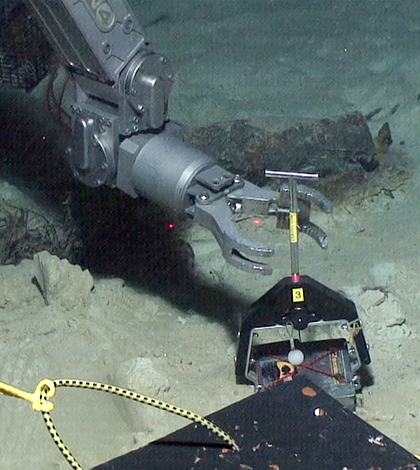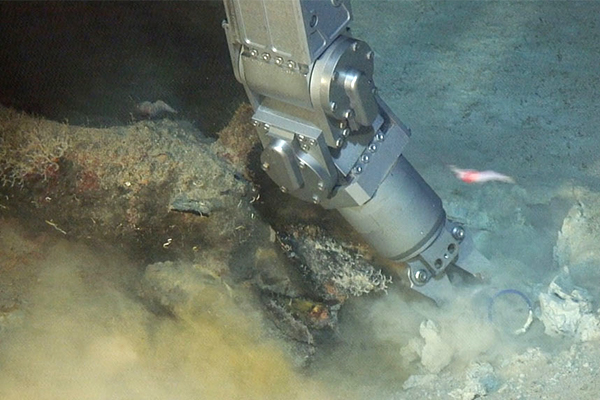The HUMMA Project sends advanced tech to Pacific munitions dumps

Prior to 1970, the U.S. military commonly disposed of old and unserviceable weapons in the ocean. Many of the useless munitions were dropped off the coast of Hawaii and left there for decades. Following the end of the dumping practice, the Hawaii Undersea Military Munitions Assessment, or HUMMA project, began to study what impacts the old weapons had on ecosystems and marine animals.
In the project’s first phases, researchers found that levels of mustard agent were at acceptable levels and creatures living near the discarded ordnance weren’t adversely affected by their presence. In fall 2014, the HUMMA project entered its final phase, looking to test out robotic technology in studying the discarded weapons.
“In addition to sidescan sonars, UH (University of Hawaii) has deployed human-occupied vehicles, the Jason 2 and RCV-150 remotely operated vehicles, a towed downward-looking camera system and four time-lapse cameras,” said Margo Edwards, principal investigator of the HUMMA project at the University of Hawaii.
Those platforms carried a broad suite of sensors, Edwards says, like deep-ocean mass spectrometers and tools to collect physical samples and sediment. Jason 2 was provided by the Woods Hole Oceanographic Institution, a partner in the research, and the Edgewood Chemical Biological Center helped with sample analysis.
“If (mustard agent was) detected, the samples are not appropriate for handling in a commercial environmental laboratory,” said Edwards. So the biological center kept those samples, and the rest were shared with scientists aboard a research vessel.

Munitions collapse. (Credit: University of Hawaii)
One goal, of course, was to gather knowledge on the effects that military ordnance have had on undersea areas, and the advanced tech certainly helped. “Our current understanding of the deep-sea environment is more sophisticated” than in the 1970s, said Edwards. And though the Department of Defense surveyed many dump sites at that time, “the analytical techniques and investigative platforms used at that time do not match the capabilities of today’s.”
But scientists also wanted to develop better approaches for locating, bounding and characterizing the deep-sea disposal sites. With those in hand, investigators at other dump sites will be more prepared to undertake studies. This goal was met with new techniques not commonly used elsewhere, Edwards says.
“HUMMA is the only project to use submersibles,” she said. “It is also the first to both deploy a mass spectrometer to measure trace amounts of chemicals around munitions and deploy multiple time-lapse cameras to monitor the interactions between munitions and local fauna.”
Top image: Remote operated vehicles study military munitions discarded in the Pacific. (Credit: University of Hawaii)





0 comments